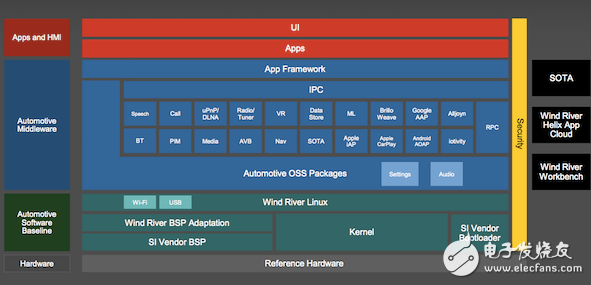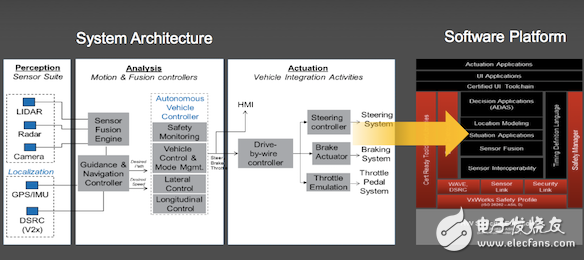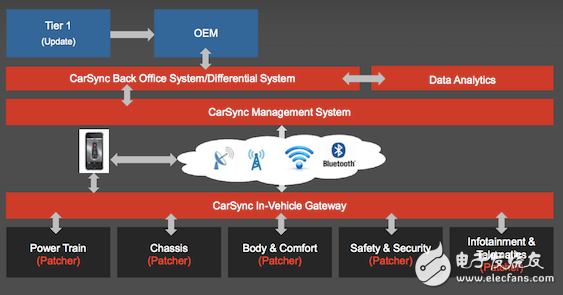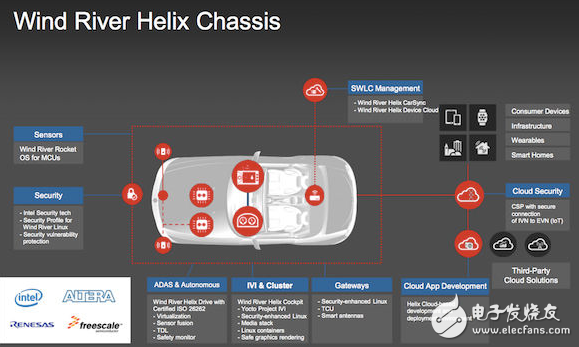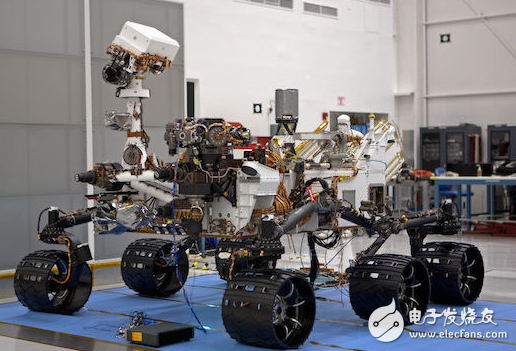Now when it comes to driverless, there are two keywords that are mentioned the most: hardware and algorithms. So we can see the emergence of cameras, radars and even laser radar companies everywhere, and deep learning has become another big hit. If the driverless car is regarded as an electronic terminal product, the underlying operating system is indispensable in addition to the hardware and the algorithm (program) used to execute the command. Unlike hardware and algorithms, the underlying operating system, whether on a PC, a mobile phone or a car system, has only a few players coming in. In July of this year, BMW, Intel and Mobileye announced that they would jointly develop unmanned driving. In addition to hoping to hand in a commercialized answer sheet for driverless driving in 2021, the three parties also aim to "join the establishment of driverless technology. Industry standards to develop an open platform for driverless driving." Whether it is an industry standard or an open platform, the underlying operating system is implicitly brushing the sense of existence. At the 2016 Developer Conference held by Fenghe in Beijing last month, Che Yunyu also learned that in this open platform, the development of the underlying operating system and middleware was handed over to Intel’s subsidiary, which was longer than embedded. Wind river. This result is not unexpected. For Intel, which is expected to launch the "second spring" in the automotive market, Wind River's skill in embedded operating systems and software has always been one of its trump cards. TIzen, which Intel and Samsung jointly promoted. Wind River has been involved in the operating system project. However, before this, Wind River's business in the car mainly focused on the car entertainment system, the five major business segments related to the car, car networking, car entertainment and integrated display accounted for three. After being acquired by Intel in 2009, Wind River joined GENIVI and began to develop in-vehicle systems for car companies; in 2014, it became a member of the Google Open Auto Alliance and co-developed Android For AutomoTIve with Google. The other two businesses are related to driving assistance. One is to provide ECU management and related software solutions related to driving assistance technology, and the other is to assist OEMs to carry out standard certification such as ISO 26262. This situation has changed now. At the Wind River Developers Conference, TY Kim, Global Delivery Director of Wind River Network's Automotive Business Unit, introduced to Che Yunyu that the Fenghe auto sector is now divided into three blocks: Helix Cockpit, which integrates the previous three services of car networking, entertainment information systems and display; Helix Cockpit System Architecture Helix Drive, the advanced driver assistance and driverless software solution, formerly known as Wind River's AutomoTIve Profile for Vxworks released in May 2015, can be understood as the car version of the Vxworks operating system, which is provided to the car company for development. For ADAS and driverless applications; Helix Drive system architecture, under development Helix Carsync, which provides online software updates and cloud services, including remote device management, is the integration of Arynga's Carsync products and Wind River's previous Helix Cloud acquired by Intel for Wind River this year. Helix Carsync System Architecture These three products, combined together, are the Helix Chassis products that Wind River launched in January this year. Helix Chassis is Wind River's software solution for cars. Wind River Helix Chassis System Architecture According to TY Kim, as the most realistic application in the Internet of Things - the car, will be a crucial step in Wind River's next strategy. The alliance between Intel, BMW and Mobileye can be said to bring a good wind to Wind River: "We don't have a standardized software platform yet, so we hope that through such collaboration, we can establish some common practice. "" Wind River wants to develop such a platform, relying on its real-time operating system (RTOS), Vxworks, which was developed in 1987. As mentioned above, Helix Drive is actually the Automotive Profile for Vxworks. Vxworks is a prominent platform in space and defense, NASA's Mars probe, and the basic platform of the Navy's unmanned aircraft. Wind River previously worked with TTTech to develop automatic parking technology for Audi based on Vxworks. Curiosity Mars Detector using Vxworks The biggest feature of Vxworks is the real-time operating system. The so-called real-time operating system differs from our current PC-side and mobile-side operating systems in "real-time". Take a computer as an example. When opening multiple applications, in order to ensure the user experience, you must be able to respond. Then the system needs to divide the computing resources into the applications according to the requirements. The result is that each application may be The program is not running so smoothly. For real-time operating systems, it is characterized by the fact that if a task needs to be executed, it will be executed immediately within a short delay time, rather than pursuing multiple tasks simultaneously. This feature has its own advantages in driverlessness: the priority of different commands can be set, and high-priority tasks can be executed immediately. TY Kim mentioned that when Vxworks is used on an airplane, there is a technology that guarantees sufficient storage and CPU resources for critical applications regardless of the state of other applications, so that critical applications can run well under all circumstances. . However, TY Kim also said that although Vxworks has been in use for a long time in the aerospace industry, it still takes several years to deploy to the car. On the one hand, because the application environment is different, it brings different requirements. Vxworks needs to do some development work for the automotive industry. On the other hand, it is because there are no perfect laws and regulations because of the high safety requirements of driverless driving. However, there is currently no software that can achieve 100% non-existent BUG, ​​which can only be said to "guarantee its reliability and security from a commercially acceptable and practical range." So before the introduction of laws and regulations, they were equally cautious about software deployment. Nowadays, many car companies are developing driverless technology. For example, Google is developing on the basis of Linux. Although Linxu itself is a general-purpose operating system, it can also be transformed into a real-time operating system. In addition, the non-open source QNX system and WinCE for in-vehicle entertainment systems are all real-time operating systems. Thus, although Wind River is driven by the alliance of Intel, BMW and Mobileye, it does not mean that it will not have competitors. QNX and Microsoft, which has been studying deep in layout, are likely to take a share. Although not as competitive as sensors and algorithms, the battle for unmanned underlying operating systems may have quietly begun. Pressure Gauge Case Type,Pressure Gauge Case Style,Pressure Gauge Case Material,Pressure Gauge Carrying Case Changshu Herun Import & Export Co.,Ltd , https://www.herunchina.com